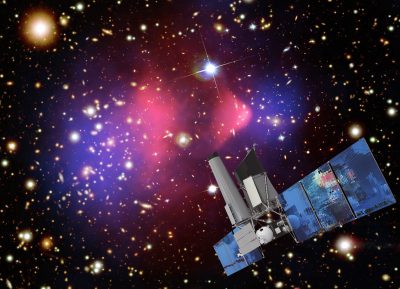Integrated Activities for the High Energy Astrophysics Domain – AHEAD


This page refers the AHEAD project closed in 2019. If you want information on the AHEAD2020 project (open), click here
H2020-INFRAIA-2014-201 Contract n. 654215 From 01/09/2015 to 01/03/2019
PI L. Piro IAPS – Rome
AHEAD (Integrated Activities in the High Energy Astrophysics Domain) is a project approved in the framework of the European Horizon 2020 program (Research Infrastructures for High Energy Astrophysics). The overall objective of AHEAD is to integrate national efforts in high-energy Astrophysics and to promote the domain at the European level, to keep its community at the cutting edge of science and technology and ensure that space observatories for high-energy astrophysics are at the state of the art. AHEAD integrates key research infrastructures for on-ground test and calibration of space-based sensors and electronics and promote their coordinated use. In parallel, the best facilities for data analysis of high-energy astrophysical observatories are made available to the European community. The technological development will focus on the improvement of selected critical technologies, background modeling and cross calibration for the benefit of future high energy missions like Athena, and the best exploitation of existing observatories. The advancement in space oriented instrumentation and cutting-edge sensor technology in Europe will enable the development of new technologies and the growth of the related European market with a dedicated technology innovation package. Through AHEAD, feasibility studies of space-based instrumentation for future gamma-ray missions will be also carried out. Finally, AHEAD will support the community via grants for collaborative studies, dissemination of results, and promotion of workshops, and a strong public outreach package will ensure that the domain is well publicised at national, European and International level. AHEAD is split in different Work Packages as described below (LARIX A and Tunnel are available for WP5):
| WP1- Management | INAF/Institute of Space Astrophysics and Planetology (IAPS) |
| WP2- General Networking for High Energy Astrophysics | University of Alicante (UA) |
| WP3- Networking activities for High Energy Astrophysics | European Gravitational Wave Observatory (EGO) |
| WP4- Public Outreach | National Observatory of Athens (NOA) |
| WP5-Access to experimental facilities | INAF/Palermo Astronomical Observatory (OAPA) |
| WP6- Access to data analysis | Leicester University (ULEIC) |
| WP7- Computational Astrophysics | University of Geneva (UNIGENEVE) |
| WP8- Access to Gravitational Wave Science Archive and Tools | European Gravitational Wave Observatory (EGO) |
| WP9- Tecnology and techniques for Microcalorimeters | Space Research Organisation Netherlands (NOW-I/SRON) |
| WP10- Optics for next generation X-ray Observatories | MPG/Max Planck Institute for Extraterrestrial Physics (MPE) |
| WP11- Space Experiments for HE Astrophysics & Multimessenger Astronomy | University College Dublin (NUID UCD) |
| WP12- Multimessenger Astronomy Exploitation and Tools | Gran Sasso Science Institute (GSSI) |
| WP13- Laboratory Astrophysics | CNRS/ Institut de recherche en astrophysique et planétologie (IRAP) |
| WP14- Advanced Tools for Data Analysis | INAF/Trieste Astronomical Observatory (OATs) |
| WP15- Innovation | Thales Alenia Space Italia Spa (TAS) |
